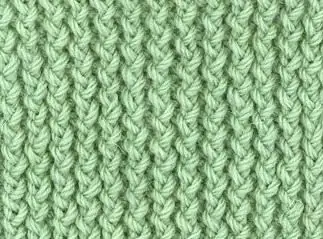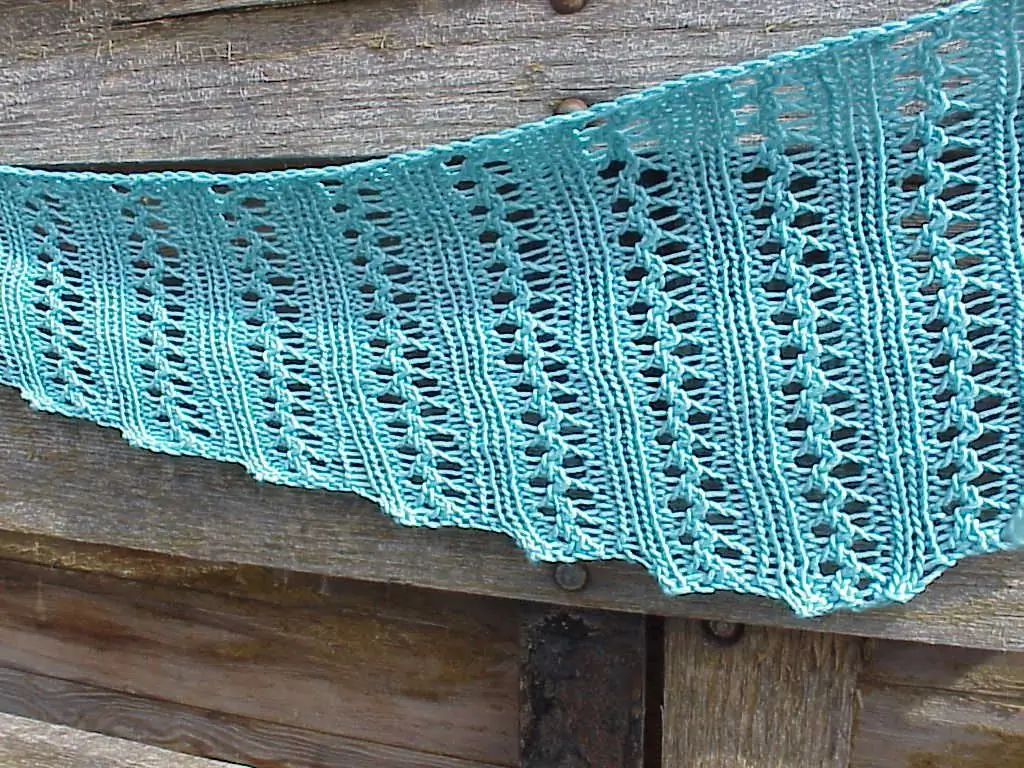
Inhaltsverzeichnis:
- Autor Sierra Becker [email protected].
- Public 2024-02-26 04:44.
- Zuletzt bearbeitet 2025-01-22 22:11.
Trotz der Tatsache, dass Weihnachten nur einmal im Jahr stattfindet, sind einige traditionelle Neujahrsdekorationen vielseitig und können den Rest des Jahres über verwendet werden. Zum Beispiel gehäkelte gehäkelte Engel (Diagramme finden Sie unten). Diese Figuren sind ganz einfach herzustellen und dienen als Dekoration für einen Weihnachtsbaum, eine Fensteröffnung oder ein Kinderzimmer.

Arten gestrickter Engel
Bedingt können alle existierenden Engelfiguren in mehrere Haupttypen unterteilt werden:
- einfach, flach;
- voluminös in Form eines Kegels;
- komplex, mit vielen Details.
Die Klassifizierung basiert auf der Herstellungsweise und dem Aussehen der Figuren. Die verwendeten Werkzeuge und Materialien bleiben für alle Typen gleich:
- Garn (Baumwolle, Viskose, Lurex, Polyamid, Mikrofaser, Leinen);
- Hilfsmaterialien (Holz- und Metallringe zum Binden, Pappe für den Rahmen);
- Haken für dünnFaden (0, 6-1,0), Schere, Nadel;
- Satinbänder, Perlen, Pailletten, Spitze und andere Dekorationen.
Je dünner der gewählte Faden ist, desto durchbrochener und zarter werden die gehäkelten Engel. Das Internet kann mit Diagrammen und Beschreibungen helfen. Dieser Artikel bietet mehrere Optionen. Durch die Anwendung von Fantasie und die Kombination mehrerer Muster kann die Handwerkerin jedoch ihr eigenes Schema erstellen.
Stricken flacher Engel
Das Foto unten zeigt einen Engel, der ein flacher Stoff ist, sowie sein Strickmuster.

Die Arbeit beginnt ganz oben. Zunächst werden fünf Luftmaschen (VP) gestrickt, die ringförmig zu einem runden Kopf geschlossen werden.
Nachdem drei Reihen gemäß dem Schema verbunden wurden, wird die Arbeit nur mit einem Teil der Leinwand fortgesetzt: um die Flügel und den Torso zu formen.
Die Basis für den Halbkreis, der zum Körper des Engels wird, ist der Anfangsbogen des VP, der an der Seite des Kopfes befestigt wird. Als nächstes wird die erste Reihe in diesen Bogen gestrickt, und alle nachfolgenden Reihen müssen streng nach dem Schema ausgeführt werden. Dies ist notwendig, um perfekt flache gehäkelte Engel zu erh alten. Sie sollten mit Dehnungsmustern des kreisförmigen Stegs vorsichtig sein, da eine zu starke Dehnung zur Bildung von Rüschen führt und eine unzureichende Dehnung zu einem gestrafften und verformten Teil führt.
Wenn der Halbkreis die gewünschte Größe erreicht hat, sollte nur noch im Mittelteil weitergestrickt werden. Auf diese Weise entsteht das Engelsgewand aus Spitze.
Volumetrische gehäkelte Engel mit Mustern und Beschreibungen
Schwieriger zu machen, aber auch schöner, kegelförmige Engel können verschiedene dekorative Designs haben.

Die wichtigsten Gemeinsamkeiten bleiben:
- runder Kopf;
- konischer Körper;
- durchbrochene Flügel;
- nimbus.
Der Kopf wird nach dem Perlenbindemuster oder nach der Anleitung zum Herstellen runder Teile für Amigurumi-Spielzeuge gestrickt. Darin können Sie einen synthetischen Winterizer oder eine große Lichtperle platzieren.
Der Körper lässt sich leicht mit jedem bekannten Roastbeef herstellen. Es kann quadratische oder halbkreisförmige Zellen haben. Hauptsache, die Leinwand dehnt sich nach unten leicht aus, dann entstehen stabile Häkelengel. Die Muster der durchbrochenen Bordüre für den Rand des Mantels finden Sie unten.

Die Verwendung dieser Muster ermöglicht es Ihnen, der Figur Leichtigkeit und Luftigkeit zu verleihen. Flügel werden auch mit einem durchbrochenen Muster gestrickt, aber Sie können sich Ihre eigene Art der Herstellung ausdenken. Für einen Heiligenschein ist es am einfachsten, einen dünnen Kreis zu binden und Goldperlen darauf zu nähen.
Herunterfahren
Der letzte Schritt besteht darin, die Figuren zu formen. Gehäkelte Engel (mit Mustern aus festen oder durchbrochenen Stoffen) müssen verarbeitet werden. Sie sollten in einer Lösung aus Stärke, Gelatine oder PVA-Kleber eingeweicht werden.
Damit die Figur beim Trocknen die richtige Form annimmt, wird sie auf einen vorbereiteten Pappkegel gesteckt. Eine Schicht Polyethylen hilft dabei, ein Anhaften der Leinwand am Papier zu vermeiden.
Empfohlen:
Shawl Engeln: Schema und Beschreibung. Durchbrochene Tücher mit Stricknadeln mit Mustern

Die Garderobe einer modernen Frau ist sehr vielfältig, doch oft erst der Einsatz zusätzlicher Accessoires lässt sie wirklich individuell wirken. Mode zeichnet sich nicht nur durch neue Trends aus, sondern auch dadurch, dass längst vergessene Kleidungsstücke oft neues Leben finden. Eines dieser Accessoires ist ein Schal
Durchbrochene Häkeljacke: Diagramm und Beschreibung. durchbrochene Muster

Es ist sehr einfach, eine durchbrochene Jacke zu häkeln. Schema und Beschreibung - das ist alles, was Sie brauchen, um loszulegen. Dieses schöne und wirklich feminine Kleidungsstück lässt sich mit vielen Dingen kombinieren und wird eine gute Alternative zu den üblichen Jacken und Rollkragenpullovern sein
Durchbrochene Strickjacke: Diagramme und Beschreibung. Durchbrochene Strickmuster

Jacke ist ein bequemes und praktisches Kleidungsstück. Es kann gestrickt, gestrickt oder gehäkelt werden. Eine mit Stricknadeln gestrickte durchbrochene Jacke wird zu einem wunderbaren Detail nicht nur der Sommer-, sondern auch der Wintergarderobe, wenn Sie das richtige Garn und Modellmuster auswählen
Muster mit Mustern stricken. Beispiele von Mustern und Mustern zum Stricken

Was macht ein gestricktes Ding unwiderstehlich? Natürlich die Muster, mit denen sie ihr Aussehen erlangte. Heutzutage gibt es Hunderte von Strickmustern, und dank der Fähigkeit von Strickern auf der ganzen Welt, neue Entwicklungen mit moderner Technologie auszutauschen, nimmt ihre Zahl zu
Durchbrochene Streifen mit Stricknadeln: Diagramme mit Beschreibungen. Durchbrochene Strickmuster

Lochstricken aus feinem Garn eignet sich für leichte Sommeroutfits: Blusen, Tops, Mützen, Schals, T-Shirts. Aus Baumwollfäden werden luftige Spitzenservietten, Wege für Möbel und Kragen von erstaunlicher Schönheit gewonnen. Und aus dickem Garn können Sie einen Pullover mit durchbrochenen Streifen, einen Pullover oder eine Strickjacke stricken. Es ist nur wichtig, das richtige Muster für das Produkt zu wählen
